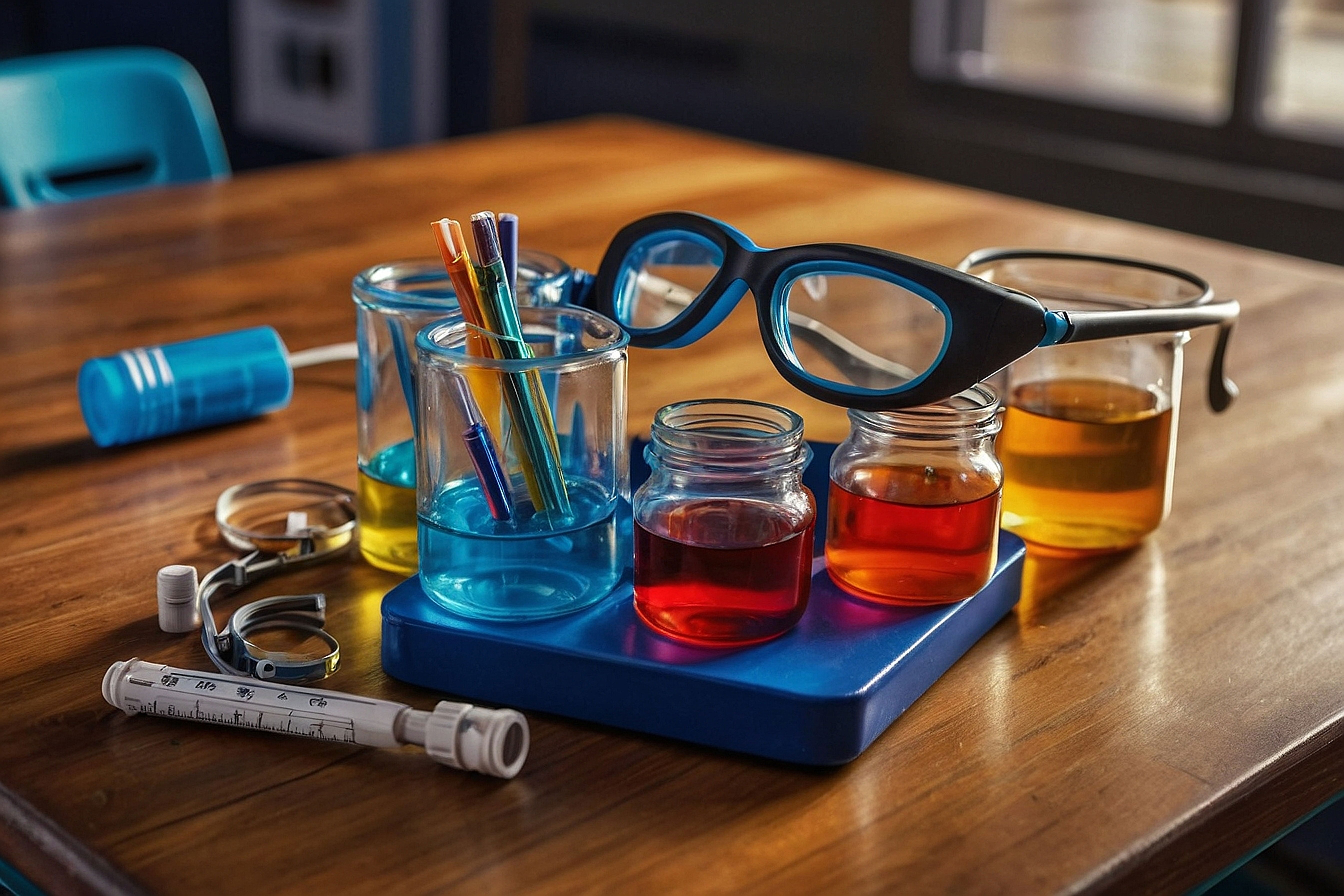Lab Equipment Reviews: Affordable Tools for Schools and Hobbyists in 2025
Introduction
In 2025, hands-on science education is more crucial than ever, yet budgets for schools and hobbyists remain tight. The good news? Affordable lab equipment has never been better, with digital tools under $100 delivering pro-level results and DIY kits sparking creativity without breaking the bank. From USB microscopes revealing cell structures to compact chemistry stations for safe reactions, these gadgets make STEM accessible, fostering curiosity in kids and lifelong learners alike.
This review, informed by educator feedback from Teachers Pay Teachers and hobbyist forums like Reddit's r/LabRats, spotlights 20 top picks across categories—microscopes, chemistry, physics, and biology—with pros, cons, costs, and setup tips. Whether outfitting a classroom on $500 or a garage lab for $200, 2025's innovations like app-integrated sensors and eco-materials ensure safe, engaging experiments. Let's equip your inner scientist—because discovery starts with the right tools!
Microscopes: Seeing the Invisible on a Budget
Microscopes are lab staples, magnifying worlds from cells to crystals. 2025's affordable options blend digital connectivity with optical clarity.
1. Carson MicroBrite Plus (Rating: 4.7/5, $15)
This pocket LED scope features 120x magnification and includes a USB connection for transferring photos to a phone. Pros: Portable, no batteries needed. Cons: Limited depth. For: Field biology; teachers' love for pond life hunts. Setup involves clipping the device to a phone, and the app magnifies images by five times.
2. Jiusion USB Digital Microscope (Rating: 4.6/5, $35)
50-1000x zoom, 8 LEDs; Windows/Mac compatible. Pros: Adjustable stand, video recording. Cons: Focus is fiddly. Ideal: Home hobbyists; Reddit users dissect insects flawlessly. Tip: Use with free DinoCapture software.
3. AmScope M150C-I (Rating: 4.8/5, $80)
40-1000x compound scope with LED illumination. Pros: Metal frame, coarse/fine focus. Cons: No digital. For: Schools; durable for 50+ kids. Add a $20 digital eyepiece for the 2025 upgrade.
4. Swift SW380T (Rating: 4.7/5, $150)
Binocular 40-2500x with trinocular port. Pros: Mechanical stage, Abbe condenser. Cons: Assembly time. Great for middle school labs; it withstands daily use.
5. OMAX 40X-2500X Digital (Rating: 4.5/5, $200)
LED trinoculars with a 5MP camera. Pros: Wi-Fi streaming, 18MP sensor. Cons: Software glitches. For: Advanced hobbyists; live demos via Zoom.
Trends: In 2025, AI-focused apps will automatically identify cells for a $20 add-on.
Chemistry Kits and Tools: Safe Reactions at Home
Chemistry sparks wonder—2025 kits emphasise safety with non-toxic reagents.
6. Thames & Kosmos Chemistry Set (Rating: 4.8/5, $50)
300 experiments; acids/bases to crystals. Pros: 48-page guide, goggles. Cons: Some supplies are one-use. For: Ages 10+; "Lab in a box", per parents.
7. National Geographic Science Kit (Rating: 4.6/5, $25)
Volcanoes, slime, and invisible ink. Pros: Eco-materials. Cons: Basic. Ideal: Elementary; mess-free fun.
8. MEL Science Chemistry Subscription (Rating: 4.7/5, $35/month)
Monthly experiments + VR app. Pros: 2-3 university-level demos. Cons: Subscription. For: Teens; tin hedgehog crystals, wow.
9. 4M Kitchen Science Kit (Rating: 4.5/5, $15)
Pantry reactions like cabbage pH. Pros: Zero cost add-ons. Cons: Short-lived. Great: Budget schools.
10. Home Science Tools Basic Chemistry (Rating: 4.6/5, $100)
Glassware and reagents for 50+ reactions. Pros: Reusable. Cons: Storage needed. For: High school; titration sets.
Safety: Goggles, gloves, and adult supervision for acids.

Physics Tools: Motion and Energy Experiments
Physics demos bring laws to life—2025's kits include sensors.
11. Thames & Kosmos Physics Discovery (Rating: 4.8/5, $40)
The product includes 12 models of catapults and pulleys. Pros: Illustrated manual. Cons: Small parts. For: Ages 8+; Newton's laws hands-on.
12. Learning Resources Simple Machines Kit (Rating: 4.7/5, $30)
Levers, gears; 5 builds. Pros: Classroom sets. Cons: Plastic durability. Ideal: Elementary; force multipliers.
13. Elenco Snap Circuits Extreme (Rating: 4.6/5, $130)
750 projects; motors, solar. Pros: No solder. Cons: Pricey. For: Middle school; circuits to robots.
14. Air Pressure Lab Kit (Rating: 4.5/5, $25)
Balloons, syringes, and vacuum demos. Pros: Portable. Cons: Limited scope. Great: Quick physics.
15. Pendulum Wave Kit (Rating: 4.7/5, $ 20)
String weights; harmonic motion. Pros: mesmerising visuals. Cons: Setup time. For: Demonstrations.
Trends: 2025's Arduino add-ons ($20) for data logging.
Biology and Earth Science: Life and Land Labs
16. National Geographic Rock Tumbler (Rating: 4.8/5, $50)
Polish gems: geology intro. Pros: 4-stage process. Cons: Noisy. For: Ages 8+; rock cycles.
17. Thames & Kosmos Biology Lab (Rating: 4.6/5, $40)
Dissections, microscopy. Pros: Slides included. Cons: Fragile. Ideal: Home bio.
18. 4M Earth Science Kit (Rating: 4.5/5, $20)
Volcano and earthquake models. Pros: Reusable. Cons: Basic. Great: Earth science.
19. Grow Your Own Butterflies Kit (Rating: 4.7/5, $25)
Caterpillar to chrysalis. Pros: Live specimens. Cons: Timing. For: Life cycles.
20. Soil Test Kit (Rating: 4.6/5, $15)
pH/NPK tests. Pros: Garden tie-in. Cons: Colour matching. For: Ecology.
Tips for Schools and Hobbyists: Budget and Safety
Schools: Bulk buys from Home Science Tools ($500 lab); grants via DonorsChoose. Hobbyists: Amazon basics ($200 starter). Safety: Goggles ($5/pack); no ingestion; ventilate fumes. 2025 Trend: Eco-kits with recycled materials.
Conclusion
Affordable lab equipment in 2025—from $15 microscopes to $50 chemistry sets—democratises discovery. As Teachers Pay Teachers notes, "Tools unlock minds"—equip wisely, experiment boldly!